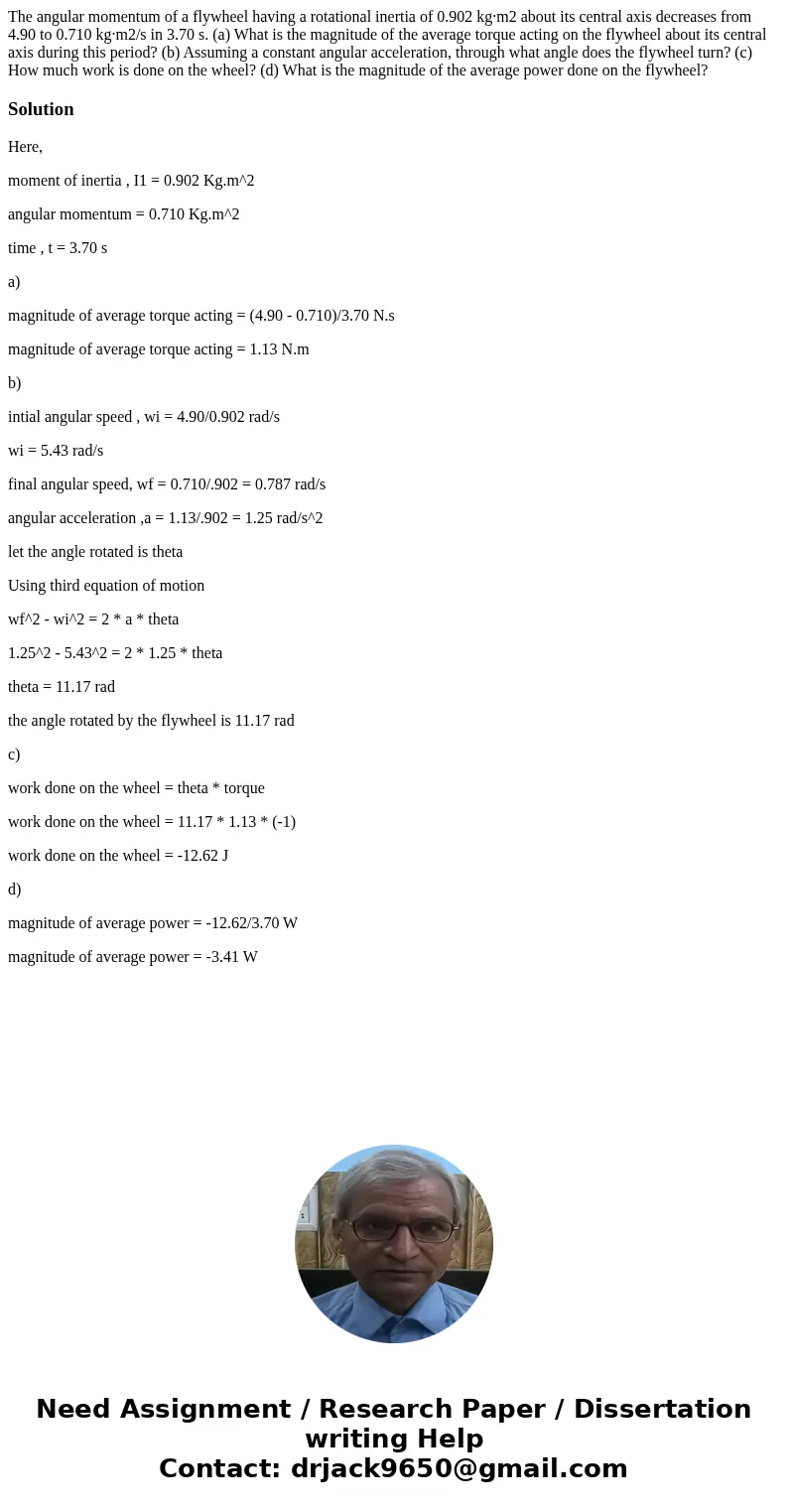The angular momentum of a flywheel having a rotational inert
The angular momentum of a flywheel having a rotational inertia of 0.902 kg·m2 about its central axis decreases from 4.90 to 0.710 kg·m2/s in 3.70 s. (a) What is the magnitude of the average torque acting on the flywheel about its central axis during this period? (b) Assuming a constant angular acceleration, through what angle does the flywheel turn? (c) How much work is done on the wheel? (d) What is the magnitude of the average power done on the flywheel?
Solution
Here,
moment of inertia , I1 = 0.902 Kg.m^2
angular momentum = 0.710 Kg.m^2
time , t = 3.70 s
a)
magnitude of average torque acting = (4.90 - 0.710)/3.70 N.s
magnitude of average torque acting = 1.13 N.m
b)
intial angular speed , wi = 4.90/0.902 rad/s
wi = 5.43 rad/s
final angular speed, wf = 0.710/.902 = 0.787 rad/s
angular acceleration ,a = 1.13/.902 = 1.25 rad/s^2
let the angle rotated is theta
Using third equation of motion
wf^2 - wi^2 = 2 * a * theta
1.25^2 - 5.43^2 = 2 * 1.25 * theta
theta = 11.17 rad
the angle rotated by the flywheel is 11.17 rad
c)
work done on the wheel = theta * torque
work done on the wheel = 11.17 * 1.13 * (-1)
work done on the wheel = -12.62 J
d)
magnitude of average power = -12.62/3.70 W
magnitude of average power = -3.41 W

 Homework Sourse
Homework Sourse